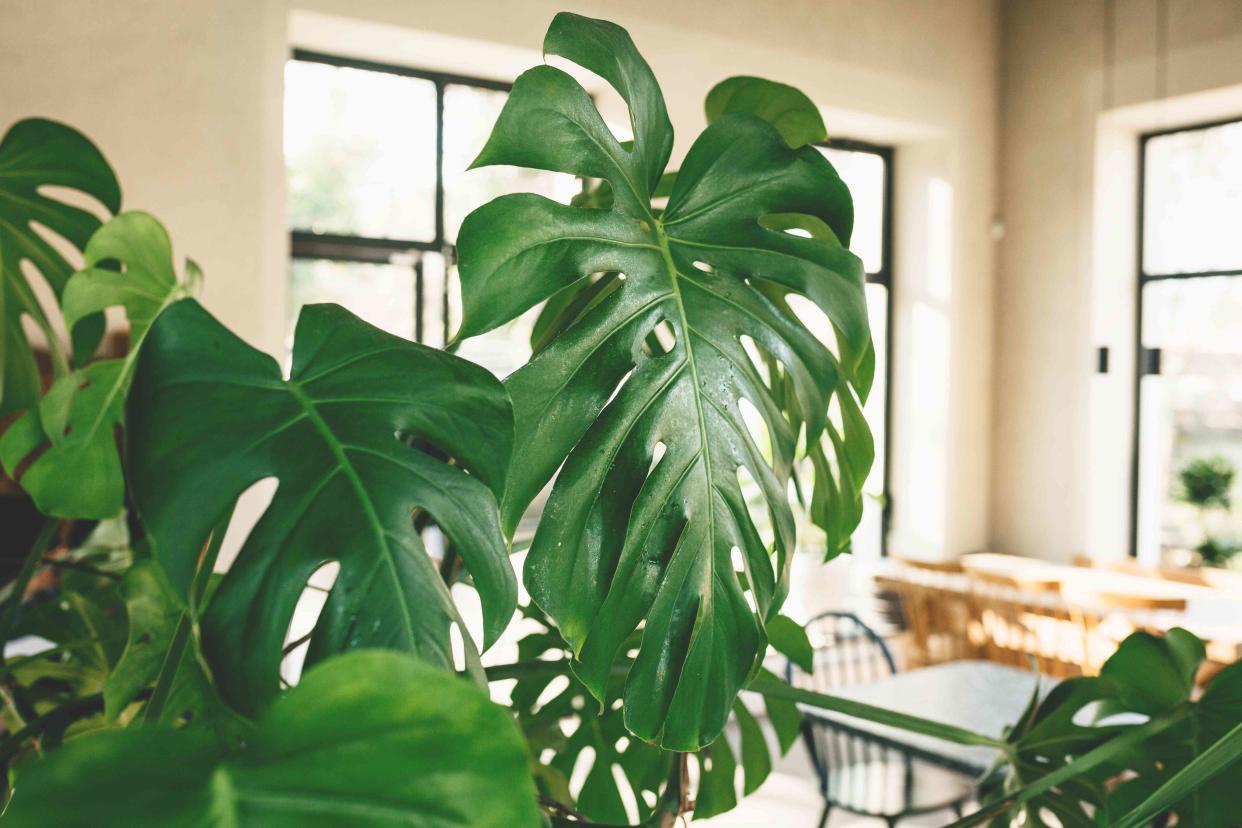3 Reasons Why Your Monstera Is Droopy and How to Fix It

franz12 / Getty Images
It can be really frustrating to spend a lot of time caring for your monstera and then see it start to droop. But the positive side of it is that, by drooping, the plant is able to tell you it needs some extra attention. Monsteras, for example, may droop to let us know that they need more water or need to be moved into the light.
There are a number of reasons why your Monstera may be droopy. Thankfully there are some things you can do to help your plant stand tall again and get those beautiful leaves unfurling. We spoke with Justin Hancock, a horticulturist at Costa Farms, to find out the reasons why your Monstera is droopy and how you can fix it.
1. Cold Damage
“The most common cause I’ve come across for droopy Monstera (particularly Monstera deliciosa) is cold damage,” says Hancock. Monstera prefers to be kept in a space above 50 degrees Fahrenheit, explains Hancock. Anything lower than that can cause damage.
Be especially aware of sudden temperature changes between warm and cool climates. "If you live in the [northern part of the United States] and it’s, say, 32 degrees, exposure to that kind of cold just going from the store to your car across the parking lot can cause damage if the plant isn’t protected,” says Hancock.
If your plant has cold damage, it will just need time to recover. As long as you give it what it needs — sufficient light, water, and humidity — it should be okay. However, you won't see the cold-damaged growth recover, "but the new growth should be fine," says Hancock.
And make sure your plant isn’t close to any cold drafts or air vents.
2. Soil Is Too Dry
A monstera can also get droopy if its soil is too dry. "This is particularly common with softer species like monstera adansonii,” says Hancock.
Make sure you’re watering your plant regularly to keep its soil moist. Stick your finger in the soil to check for moisture and water when the top 2 inches of soil are dry.
You’ll also want to make sure it has enough humidity as it’s a tropical plant. The best thing to do is set up a humidifier nearby, put it in a humid bathroom with plenty of natural light, or group some of your plants together.
3. Over-Fertilization
Slight over-fertilization can also make a monstera droopy. “It’s not super common," says Hancock, who also notes that if you've majorly over-fertilized your plant, it'll be brown, not wilted.
If you think you’ve over-fertilized your plant, the best thing to do is flush out the soil with water to clean it. This will help remove any excess nutrients or salts.
If you’re going to fertilize your plant, make sure you’re diluting your fertilizer and reading the instructions on the packaging.
Frequently Asked Questions
Why would monstera stems and leaves be droopy?
Monsteras can droop for a number of reasons including your plant' soil being too dry, the plant experiencing cold damage, and over-fertilization.
How do you fix a droopy monstera?
To fix a droopy monstera, check that the soil isn't dry and water it if it is; flush excess nutrients and salt out of the soil to help with over-fertilization; and keep it away from cold and drafty places.
Should you mist a monstera?
You do not need to mist a monstera. “Misting a tropical plant like Monstera is more therapeutic for the gardener than it is the plant,” says Hancock. The misting can only provide a temporary humidity boost, he explains. To increase relative humidity, Hancock suggests adding a humidifier or group of plants around the base of your Monstera.
What does an underwatered monstera look like?
An underwatered monstera deliciosa or monstera peru will have leaves that have lost a bit of their sheen, explains Hancock. A monstera adansonii's leaves may be more of a faded or slightly gray-green color. “If it’s not watered, the signs progress to wilting, followed by browning of the leaf tips and edges," Hancock says.

